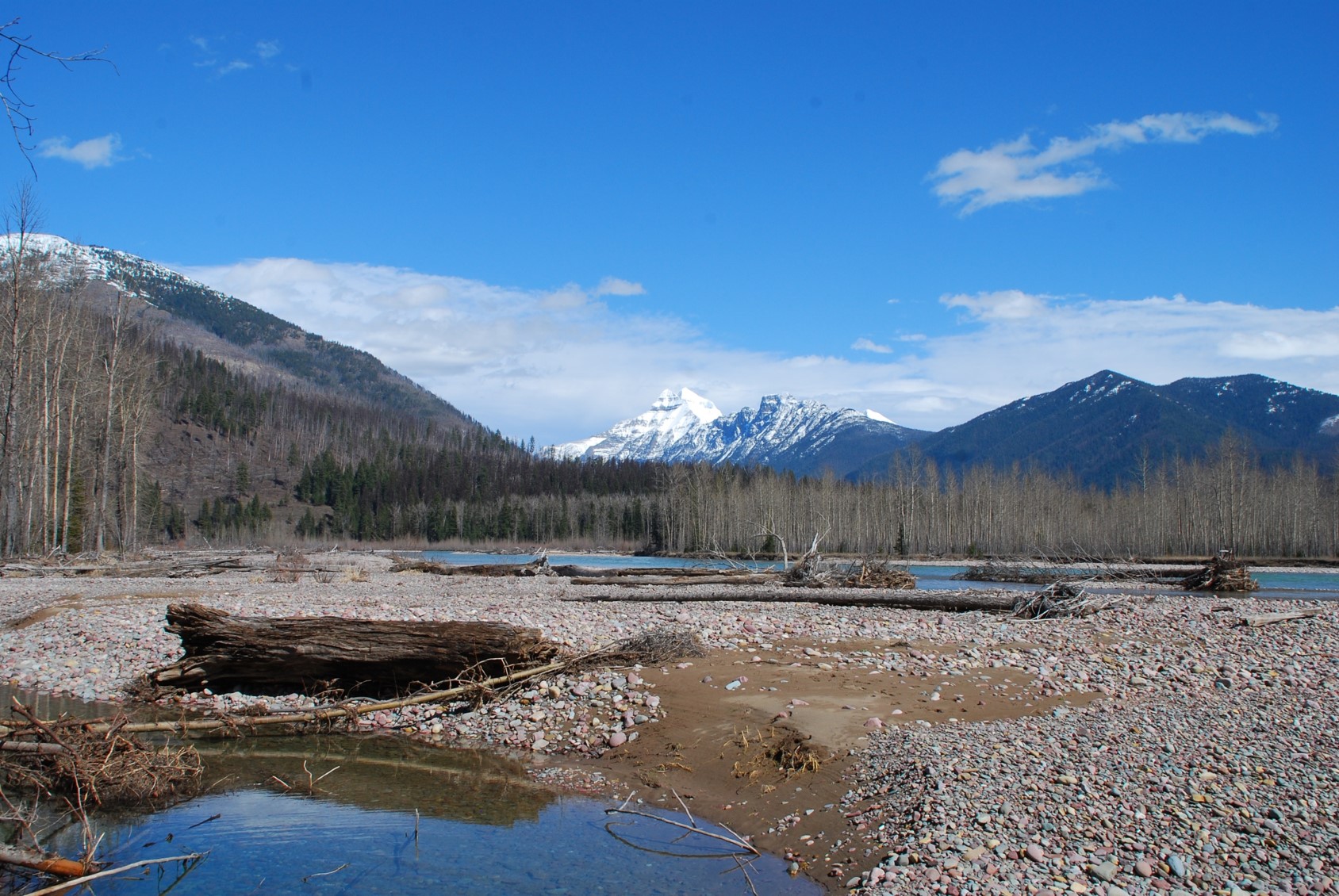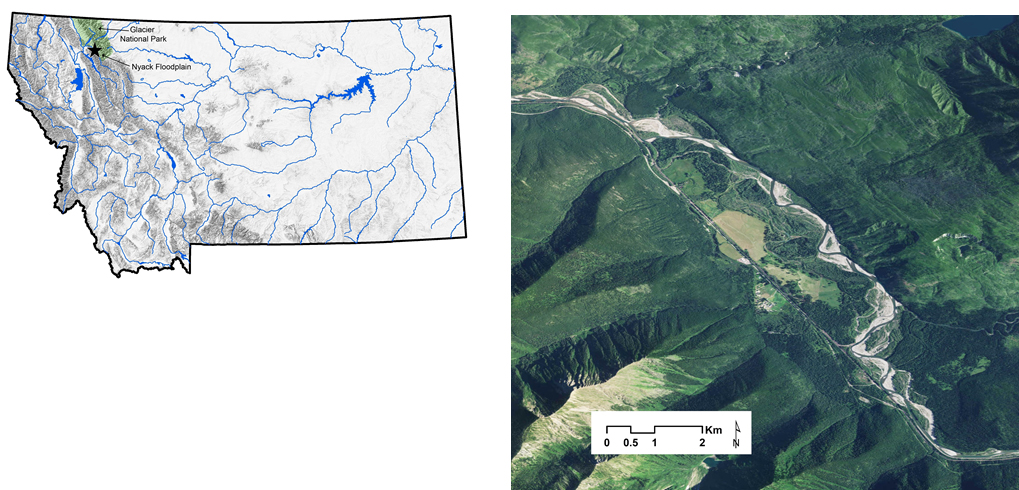River floodplains are among the most biodiverse yet endangered landscapes on earth due to human-caused habitat destruction, shifts in river flow regimes, and climate change. Floodplains provide important habitat for aquatic and terrestrial organisms from microbes, insects and fish, to amphibians, birds, elk and grizzly bears. For example, half of all the >100 stonefly species in the entire state of Montana exist along the Flathead River. Unfortunately, many species and their gene diversity are disappearing from river floodplains before we can even document their existence or describe their characteristics and importance within the greater food web (e.g., which insects are food for fish or birds?).
River floodplains are very complex because the amazingly diverse types of habitats found there (Fig 1). Frequent floods create a shifting mosaic of different aquatic habitats on floodplains. For example, in addition to the main river there are smaller side channels, ponds and springs that all have different temperatures and habitat characteristics. Even more habitat diversity occurs on river floodplains than meets the eye because the river is interconnected to underground gravel beds (the aquifer) that underlies the entire floodplain. These aquifer habitats are connected via underground water flow for <2 kilometers away from the main river channel!

Nyack Floodplain (photo by Amanda Delvecchia)
These different habitats support highly diverse invertebrate communities that are almost entirely unstudied using genetic techniques. Most stoneflies (Plecoptera) are found in water with a lot of oxygen, like the main river channel. Stoneflies are very exciting to study in river floodplains because there are species that are adapted to living underground in the river aquifer. Some of these species can even live in places with very low oxygen.
This study will quantify biodiversity vulnerability of the river channel and aquifer stonefly species in relation to strong variation in habitat conditions (temperature, dissolved oxygen, elevation) that are created by flooding and found on river floodplains.
Relatively little is known about the diversity and vulnerability of aquifer and river communities in a floodplain landscape context, especially the role of adaptive capacity (the measure of the ability of organisms to adapt to changes in the environment either through their genetic or physiological makeup) in reducing vulnerability to negative effects of environmental change. This project integrates the dimensions of biodiversity by combining empirical phylogenetic, population genomic, and functional trait data from experiments and natural populations, and by explicitly modeling and testing for species and genomic interactions along floodplain environmental gradients.
 The Nyack Floodplain is located near Glacier National Park on the Middle Fork of the Flathead River
The Nyack Floodplain is located near Glacier National Park on the Middle Fork of the Flathead River
Our work is being conducted on floodplains of the Middle Fork, North Fork and main Flathead River in Montana, as well as on floodplains of the Methow River in Washington. Our research is building on 40+ years of past work on the Nyack Floodplain (by former FLBS director Dr. Jack Stanford and 50+ undergraduate students, graduate students, postdoctoral scholars and collaborators that has resulted in 70+ publications). The Nyack is both a focal study site of the Flathead Lake Biological Station and one of the most studied river floodplains in the world (see below).
Our project is being funded by a grant from the Dimensions of Biodiversity program at the National Science Foundation.